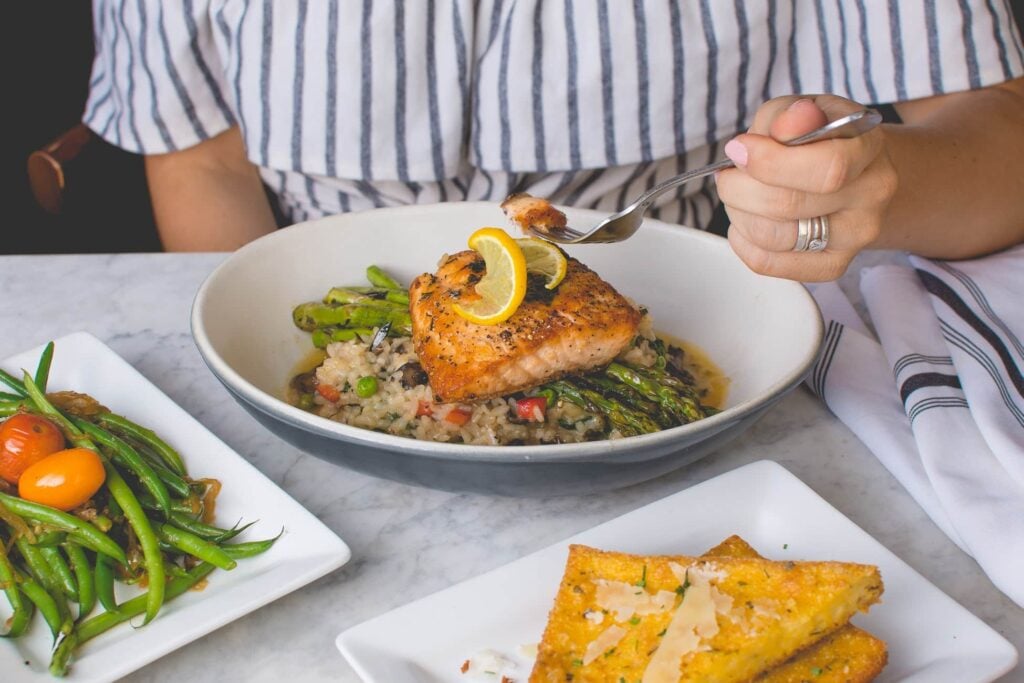
The fitness industry has long maintained that eating six small meals at regular intervals throughout the day is the go-to schedule for any gym fanatic. But with things like intermittent fasting gaining popularity, this long-favoured method isn’t quite so popular.
Let’s break down the different eating patterns out there and figure out which one is best for fitness freaks:
Six small meals a day
Long considered the gold standard in the weightlifting community, eating six small meals a day claims to rev up your metabolism and aid weight loss. But is this actually true?
To put it bluntly: no. While there’s no obvious disadvantage to spreading out your daily calories, the metabolic benefits aren’t backed by science whatsoever.
Your metabolism isn’t a switch that you can turn on or off. It’s a whole bunch of hormones that are always working. If your metabolism wasn’t working, you’d be dead.
One thing eating more regularly does do to your body is stimulate the release of insulin. Insulin is a hormone released by the pancreas when carbohydrates and protein are consumed. Insulin prevents fat burning and promotes fat storage— which isn’t exactly ideal for weight loss or muscle gain.
There are of course some advantages to eating six small meals a day. It allows you to enjoy more varied food, makes it easier to spread out your protein intake, and also helps you to feel less deprived on a cut due to eating more regularly.

Intermittent fasting
Intermittent fasting involves eating within a time-restricted window. You might have heard of the 16:8 method popularised by the Leangains protocol— that is, eating in an eight hour window and fasting for 16. For some people, this is as simple as skipping breakfast and eating an early dinner.
There are many different forms of intermittent fasting. Some people even eat all of their calories in one single meal each day. Now that’s impressive!
Training-wise, many people rave about the benefits of fasted workouts. This method claims to affect the way the body intakes oxygen and burns fat.
That isn’t to say intermittent fasting is for everyone. It can be difficult to work into your schedule, especially with shared meal times. Some people feel fatigued and dizzy while exercising fasted. There is also some decrease in performance when lifting weights fasted as opposed to consuming something — especially carbohydrates — before your session.
So what’s the bottom line on training fasted? Firstly, you don’t have to train in your fasted window. If you are thinking of lifting weights fasted, you might want to consider which is more important to you: a slight fat burning advantage or performance. More importantly, remember that you don’t have to do intermittent fasting to see significant fat loss.

Three large meals a day
Sometimes the most effective solution is the least exciting. While everyone else is either grazing every two hours or cramming an entire day’s worth of food into three hours, it can be surprising to find that sticking to a good old fashioned three-meals-a-day meal plan works just fine.
While there’s not a lot to speak to in regards to impact on training, eating three decent-sized meals a day can leave you feeling a lot more satisfied and much less deprived.
What about snacks? Can they be incorporated into an effective meal plan that still suits your training? Snacks can make great pre-workout fuel, can be customised to help you meet your macros, and are overall a fantastic tool for maintaining your sanity during a cut. But don’t forget that snacking does increase the amount of calories you consume over the day, so they can contribute to weight gain if not kept in check.
Now you’ve weighed up your options for an ideal eating schedule, it’s time to level up your training. One of the best ways to really burn fat while building muscle is with functional equipment. Burn out your arms with battling ropes, or go for a full-body workout with a weight sled. And if it helps, you can reward yourself with a snack afterwards— one that fits your macros, of course!
Don’t hesitate to reach out to the NC Fitness team today for any questions you might have about optimising your training.